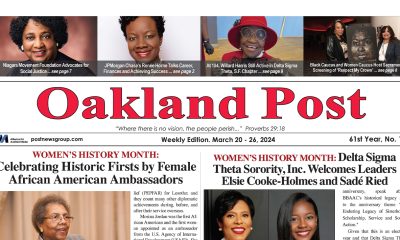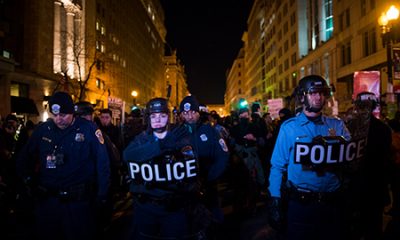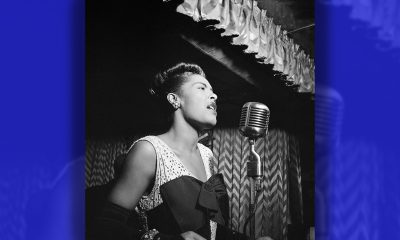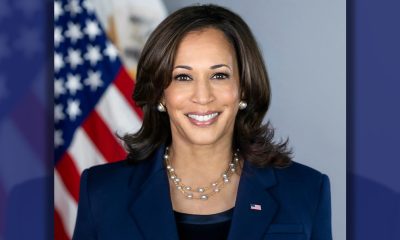Community
Local Educators Announce Initiatives For Black Lives Matter At School’s Week Of Action
THE SEATTLE MEDIUM — The Black Lives Matter At Schools Movement’s momentum is growing as its impact on the community has been fruitful.
By The Seattle Medium
On Monday, education leaders in Seattle held a press conference at the Rainier Beach Community Center to announce their new initiatives for the Black Lives Matter At School’s upcoming week of action to take place Feb. 4 – 8.
Black Lives Matter At Schools, in partnership with Seattle Public Schools, the Center for Racial Equity, the NAACP and N.Y.C (NAACP Youth Coalition) and parents of the community, is building on the nationally recognized work they began last year in bringing racism awareness and racial equity in schools around the region and nation.
During the “Week Of Action” program Black Lives At School will reintroduce their Demands as well as introduce a new curriculum, a book entitled Teaching For Black Lives for educators, students and parents about teaching ethnic and racial sensitivity, followed by a Black Lives Matters At School rally and student talent showcase.
In addition to pushing school districts to provide ethnic studies as part of their curriculum, the organization is also asking school’s administrators to recognize the need to educate and train both student and educators in “zero tolerance”, discipline and implement restorative justice in how they treat racism and systematic racism within education.
“Including Black Lives Matter At School Movement curricula in classrooms across the nation is an affirmation of the importance and power of ethnic studies,” says Tracy Castro-Gill, Ethnic Studies Program Manager for the Seattle Public Schools.
“Educators across our district have shared how their experience last year in teaching the Black Lives Matter lessons changed how they thought about Ethnic Studies and moved many educators to rethink their content and practices,” added Castro-Gill.
The organization is also promoting the hiring of more Black teachers and a “counselors not cops program” which aims to provide students of color a more positive and productive means of crisis control other than the justice system and the “pipeline to prison” as a solution through meaningful counseling.
According to Jesse Hagopian, an ethnic studies teacher at Garfield High School, racism and systematic racism has been on the rise in the Pacific Northwest in response to the present leadership in Washington D.C. and the nation’s educators are taking notice and action to combat this and provide children a leg up through learning, introducing them to the diversity in people.
“With racist hate crimes on the rise and the president who makes openly racist comments about Africa and Haiti, it is vital that we transform our education to be about uplifting Black lives undoing racism,” says Hagopian.
The Black Lives Matter At Schools Movement’s momentum is growing as its impact on the community has been fruitful.
The NAACP’s NAACP Youth Coalition has produced a growing number of young students who are taking on leadership roles as they work to bring about a more compassionate, inclusive and productive learning environment.
Israel Presley a Rainier Beach student and member of the N.Y.C believes, “this [Black Lives Matter At School Movement] is out of the need for change, Seattle struggles with making changes happen or even actually listening.”
“What I’ve noticed is a lot of times we put our voices out there, we try to say what we want, but they don’t pick up,” said Presley. “They don’t pick it up at all and I think with the Black Lives Matter At School it is a wakeup call saying ‘hey we are here, it’s time to listen, it’s time to wake up.’”
There are several events that will take place during the Week Of Action. On Mon., Feb. 4 BLM At School will gather at the University of Washington’s Kane Hall at 7:00 p.m. to introduce their new book “Teaching For Black Lives.” Weds., Feb. 6 at 4:45pm at the John Stanford Center for Educational Excellence BLM At School will roll out their agenda and demands and Fri., Feb. 8 at 6:00 p.m. at Cleveland High School the students will take the lead with a rally and talent showcase.
This article originally appeared in The Seattle Medium.
Activism
Oakland Post: Week of April 17 – 23, 2024
The printed Weekly Edition of the Oakland Post: Week of April 17 – 23, 2024

To enlarge your view of this issue, use the slider, magnifying glass icon or full page icon in the lower right corner of the browser window. ![]()
Activism
Oakland Schools Honor Fred Korematsu Day of Civil Liberties
Every Jan. 30, OUSD commemorates the legacy of Fred Korematsu, an Oakland native, a Castlemont High School graduate, and a national symbol of resistance, resilience, and justice. His defiant stand against racial injustice and his unwavering commitment to civil rights continue to inspire the local community and the nation. Tuesday was “Fred Korematsu Day of Civil Liberties and the Constitution” in the state of California and a growing number of states across the country.

By Post Staff
Every Jan. 30, OUSD commemorates the legacy of Fred Korematsu, an Oakland native, a Castlemont High School graduate, and a national symbol of resistance, resilience, and justice.
His defiant stand against racial injustice and his unwavering commitment to civil rights continue to inspire the local community and the nation. Tuesday was “Fred Korematsu Day of Civil Liberties and the Constitution” in the state of California and a growing number of states across the country.
One OUSD school is named in his honor: Fred T. Korematsu Discovery Academy (KDA) elementary in East Oakland.
Several years ago, founding KDA Principal Charles Wilson, in a video interview with anti-hate organization “Not In Our Town,” said, “We chose the name Fred Korematsu because we really felt like the attributes that he showed in his work are things that the children need to learn … that common people can stand up and make differences in a large number of people’s lives.”
Fred Korematsu was born in Oakland on Jan. 30, 1919. His parents ran a floral nursery business, and his upbringing in Oakland shaped his worldview. His belief in the importance of standing up for your rights and the rights of others, regardless of race or background, was the foundation for his activism against racial prejudice and for the rights of Japanese Americans during World War II.
At the start of the war, Korematsu was turned away from enlisting in the National Guard and the Coast Guard because of his race. He trained as a welder, working at the docks in Oakland, but was fired after the bombing of Pearl Harbor in 1941. Fear and prejudice led to federal Executive Order 9066, which forced more than 120,000 Japanese Americans out of their homes and neighborhoods and into remote internment camps.
The 23-year-old Korematsu resisted the order. He underwent cosmetic surgery and assumed a false identity, choosing freedom over unjust imprisonment. His later arrest and conviction sparked a legal battle that would challenge the foundation of civil liberties in America.
Korematsu’s fight culminated in the Supreme Court’s initial ruling against him in 1944. He spent years in a Utah internment camp with his family, followed by time living in Salt Lake City where he was dogged by racism.
In 1976, President Gerald Ford overturned Executive Order 9066. Seven years later, the 9th Circuit Court of Appeals in San Francisco vacated Korematsu’s conviction. He said in court, “I would like to see the government admit that they were wrong and do something about it so this will never happen again to any American citizen of any race, creed, or color.”
Korematsu’s dedication and determination established him as a national icon of civil rights and social justice. He advocated for justice with Rosa Parks. In 1998, President Bill Clinton gave him the Presidential Medal of Freedom saying, “In the long history of our country’s constant search for justice, some names of ordinary citizens stand for millions of souls … To that distinguished list, today we add the name of Fred Korematsu.”
After Sept. 11, 2001, Korematsu spoke out against hatred and discrimination, saying what happened to Japanese Americans should not happen to people of Middle Eastern descent.
Korematsu’s roots in Oakland and his education in OUSD are a source of great pride for the city, according to the school district. His most famous quote, which is on the Korematsu elementary school mural, is as relevant now as ever, “If you have the feeling that something is wrong, don’t be afraid to speak up.”
Community
For Cervical Cancer Month, Medical Community Focused on Education
January was Cervical Cancer Awareness Month. Physicians, advocates and others in the medical community commemorated the month by raising awareness about a form of cancer they say is highly preventable and treatable. Cervical cancer is caused by a virus called the human papillomavirus (HPV) and it develops slowly over time but can be prevented with proper care in girls as young as 13 years old.

By Magaly Muñoz
January was Cervical Cancer Awareness Month.
Physicians, advocates and others in the medical community commemorated the month by raising awareness about a form of cancer they say is highly preventable and treatable.
Cervical cancer is caused by a virus called the human papillomavirus (HPV) and it develops slowly over time but can be prevented with proper care in girls as young as 13 years old.
Sonia Ordonez, an OBGYN and gynecology surgeon at Kaiser Permanente, stated that as soon as people with cervixes reach the maturity reproductive age, they should start taking preventative measures like getting the HPV vaccine. The vaccine involves a series of two-doses for people aged 9 through 14 or three-doses for people 15 through 45 years old.
“I see a lot of young women who can’t remember or may not have gotten [the vaccine] when they were younger, or maybe got one, but we can give them the series of vaccines and restart at any point in time,” Ordonez said.
She said that cervical cancer is not the only cancer caused by HPV. Strains of the virus can also lead to throat, anal and penile cancers.
Screening is also an effective way to check for cervical cancer and should be done every three years after someone turns 21, doctors recommend. It is best to start as early as possible to catch occurrences early.
Ordonez said that this cancer is also more likely found in people of color and has led to more deaths overall.
A Mayo Clinic article published last month stated that Black women are more likely to be diagnosed and die of cervical cancer, compared to White women in the U.S.
2,000 Black women are diagnosed every year with cervical cancer and 40% die as a result.
“This disparity is not due to genetic differences among White, Black or Hispanic women, but rather related to systemic racism, access to healthcare and socioeconomic factors,” Dr. Olivia Cardenas-Trowers, a Mayo Clinic urogynecologist, said in the article.
Ordonez stated that immigrant women are also highly susceptible to the cancer, as many Latin American countries may not have accessibility to screenings or lack of insurance makes it harder for them to get tested.
Hispanic women are 40% more likely to be diagnosed with cervical cancer, and 30% more likely to die from it, as compared to non-Hispanic White women, according to the Office of Minority Health.
Family medicine physician, Joy Anyanwu, stated that the pandemic contributed to hesitancy about getting cervical cancer screenings among some women. Other factors are people’s aversion to vaccines, parents not wanting to believe that their children are or will become sexually active, and doubt about the overall effectiveness of the vaccine.
“The vaccine is very safe — over 97% effective in preventing cervical cancer,” Anyanwu said. “Even if you aren’t having sex, the earlier you start would actually help.”
Anyanwu said she understands that parents might not want to ask questions about their children’s reproductive health, but it’s a mindset that can be a barrier to having important conversation about prevention or care.
To keep families their families and communties healthy, the doctor emphasized that people should prioritize keeping up with their vaccine series and going to screenings every year.
-

 Activism4 weeks ago
Activism4 weeks agoOakland Post: Week of March 20 – 26, 2024
-

 #NNPA BlackPress3 weeks ago
#NNPA BlackPress3 weeks agoCOMMENTARY: D.C. Crime Bill Fails to Address Root Causes of Violence and Incarceration
-

 #NNPA BlackPress3 weeks ago
#NNPA BlackPress3 weeks agoMayor, City Council President React to May 31 Closing of Birmingham-Southern College
-

 #NNPA BlackPress3 weeks ago
#NNPA BlackPress3 weeks agoCOMMENTARY: Lady Day and The Lights!
-

 #NNPA BlackPress3 weeks ago
#NNPA BlackPress3 weeks agoFrom Raids to Revelations: The Dark Turn in Sean ‘Diddy’ Combs’ Saga
-

 #NNPA BlackPress3 weeks ago
#NNPA BlackPress3 weeks agoBaltimore Key Bridge Catastrophe: A City’s Heartbreak and a Nation’s Alarm
-

 #NNPA BlackPress3 weeks ago
#NNPA BlackPress3 weeks agoBaltimore’s Key Bridge Struck by Ship, Collapses into Water
-

 Activism3 weeks ago
Activism3 weeks agoOakland Post: Week of March 27 – April 2, 2024


















































